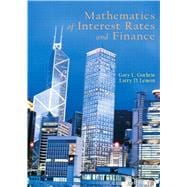
| Technologies, architecture, and Java patterns for building robust multi-tier J2EE applications | |
| All you need to build robust, multi-tier J2EE applications Presents in-depth coverage of J2EE technologies, architecture, and Java design patterns Covers Web services, XML, security, messaging, networking, and much more Complete case study covers the design, construction, and integration of every application tier To build high-performance Web applications and services with J2EE, developers need deep mastery over J2EE's diverse technologies and effective architectural strategies for designing distributed multi-tier applications | |
| In J2EE and Beyond, a leading J2EE developer delivers both | |
| Art Taylor ranges far beyond JSPs, EJBs, and servlets, offering practical insight into many crucial J2EE APIs, and presenting powerful design patterns that illuminate the effective use of J2EE 1.3 and J2SE 1.4 | |
| Taylor's example-rich coverage encompasses all this, and more: JAXM, JAXP, and other J2EE APIs for XML and Web services development Java security APIs: JSSE for SSL support, JCE for cryptography, and JAAS for authentication and authorization Effective strategies for utilizing RMI and Java networking The latest enhancements to JDBC database connectivity Making the most of logging and other J2SE 1.4 enhancements Java messaging (JMS), directory services (JNDI), and much more J2EE and Beyond also includes a complete case study demonstrating how every tier, each core J2EE technology, and related technologies such as XML all come together to create a J2EE application | |
| Table of Contents provided by Publisher. All Rights Reserved. |
The New copy of this book will include any supplemental materials advertised. Please check the title of the book to determine if it should include any access cards, study guides, lab manuals, CDs, etc.
The Used, Rental and eBook copies of this book are not guaranteed to include any supplemental materials. Typically, only the book itself is included. This is true even if the title states it includes any access cards, study guides, lab manuals, CDs, etc.